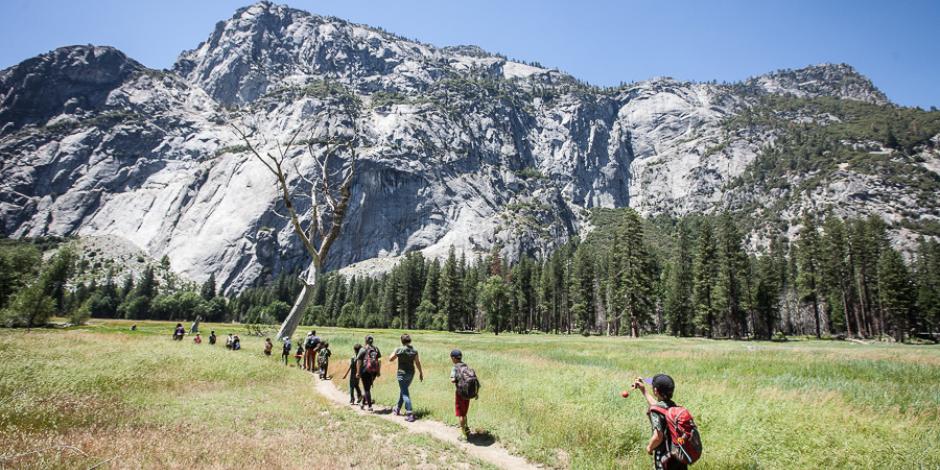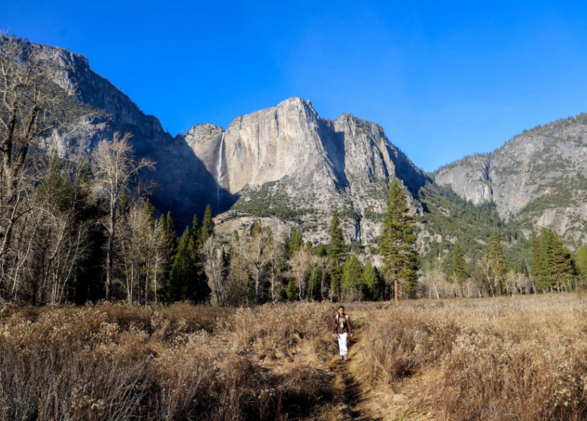Commemorating NatureBridge (and America!) with Tom Medema

NatureBridge is celebrating its 50th anniversary this year. Five years from now, The United States will be commemorating its 250th. One of the lead people responsible for planning the 250th Anniversary Commemoration is Tom Medema, Acting Associate Director of Interpretation, Education and Volunteers at the National Park Service (NPS), former Chief of Interpretation and Education at Yosemite National Park and a longtime supporter of NatureBridge. We sat down over a video call to discuss how NatureBridge and the United States have made it to these milestone anniversaries, the expansion of historically excluded stories and the resilience required to build the future.
Can you tell me about your position with the NPS Interpretation, Education and Volunteers?
While many are aware of the interpretation and education side of my work, what they may not know is that the second largest workforce in the federal government is the NPS Volunteer program. The largest is the VA [Veterans Affairs] with 340,000 and third largest is the United States Army: 240,000 employees. The NPS has 300,000 individual volunteers a year! It's remarkable, and a portion of those are NatureBridge students and employees who also volunteer for the NPS. In addition to all of the education and volunteer focus, about half my time is currently focused on 2026 and the 250th anniversary of the Declaration of Independence.
Yes, you’re tasked with putting together the 250th Commemoration of the signing of the Declaration of Independence; a massive, nationwide event in a style not seen since the 1976 Bicentennial. How did this come about?
It came into law in 2016, at the end of the Obama administration with Sally Jewell. The Semiquincentennial Act was passed that set up a federal commission, giving us a 10-year window to plan for the commemoration on July 4, 2026: America250. You mentioned 1976 — for me as a 10-year old at that time, the Bicentennial was everything. I still have dozens — maybe hundreds — of Bicentennial coins upstairs. And so when it came down that the Park Service was going to set up programs around America250, I told them if you need somebody, keep me in mind. That was because of my connection to the Bicentennial, but also my belief that the narrative needs to continue to expand from the traditional Founding story.
It strikes me that it’s not being called a celebration, but a commemoration, and I’m guessing the Founding narrative plays into why that’s the case.
We're strongly leaning on the term commemoration, because that’s what the law states and we recognize our Indigenous communities in particular — from Hawaii to Alaska and across the United States — have a very different perception of the Declaration of Independence. When I grew up, we focused on “life, liberty and the pursuit of happiness.” These are indeed things to celebrate, but just down below that in the next paragraph are three different words: “merciless Indian savages.” So to expect Indigenous communities to say, “Yeah, the Declaration of Independence — great document,” that lacks empathy. You know, the Constitution talks about “toward a more perfect union.” Of course there’s no such thing as a perfect union. It's not humanly possible. So toward a more perfect union...I'm absolutely sold that the only way to get toward unity is empathy. And the only way to get to empathy is understanding, which is education — emotional, social, historical — all of those things. The commemoration gives us a platform and an unprecedented generational opportunity to expand empathy, which will get us toward a more perfect union. So I think there's so much potential there. I’m probably more fired up about it than anything else I've ever done in my career.
What are you doing differently for this commemoration in order to expand the story of the last 250 years?
It's still five years off, and we're just developing our strategy, but it’s already started. The 250th anniversary of the Boston Massacre was last March, so we are in the period of commemoration for the American Revolution. It's truly going to be something that is going to happen in every community, in every state, in every town. Our challenge is how are we going to do it and do it more inclusively. You know, we see Confederate monuments coming down and monuments of Columbus coming down, and so many things happening with environmental justice and social justice; how is that built into the narrative of America?
What do you want people to take away from the America250 commemoration?
I would love for the commemoration to build a stronger understanding and broader narrative of America, so that people don't have just one view of what it means to be American. I want people to understand and empathize with non-dominant narratives of America and that sharing the identity of America is not just okay, but is the true spirit of our nation. So I think a large portion of the commemoration’s success is allowing a lot of other versions of America to exist and accepting the many meanings it has for people instead of just the traditional approach that we've had for so long. We’ve been breaking that down and expanding our national narrative for some time now, but this commemoration can accelerate that process.
You’ve been a supporter of NatureBridge since your NPS posting in Yosemite; how and why did you form such a strong bond to the organization?
When my wife, Cindy, and our kids David and Anna first arrived in El Portal, it didn’t take long for NatureBridge to become part of our daily lives. The kids had Project Pluton at school and Yosemite is My Backyard in the summer. We were also embedded with NatureBridge because of the housing and the social nature of the community. There was a music scene with local bands, with members of NatureBridge performing together and writing songs about other people in NatureBridge. It’s a community unlike any other I’ve seen in the world. I'm still surrounded by it. Whether it's on my vest upstairs or…[Tom goes off-screen and then returns] my drumsticks. I think I'm perhaps the only person in the world that has NatureBridge-branded drumsticks.
I am unaware of any organization and certainly any NGO [non-governmental organization] that has faced the number and diversity of crises that NatureBridge has faced... We had scores of major life-altering, life-taking issues, crises and natural disasters in Yosemite that many other organizations would have just thrown up their hands and quit. NatureBridge staff and leadership pivoted to embracing the dynamism of the landscape and using all of these things as teaching tools. Each time they get knocked down, they seem to get back up stronger as an organization.Tom Medema
NatureBridge is celebrating its 50th anniversary. I’d love to hear your perspective as someone from the National Park Service on how NatureBridge has survived and thrived over the years, and maybe...how do we get to 250?
First of all, I think NatureBridge is a piece of America at 250; the idea of it being born through the environmental movement. That view of the Earth from Bill Anders and this inspiration that this finite place has to be protected — in many ways the United States has led that movement since the early 1970s. NatureBridge having been there from the beginning of that movement is a piece of American history that has had a ripple effect around the world. NatureBridge is a facilitator of connections and engenders that sort of understanding and empathy that we've been talking about. I think there's easily another 200 years of that work ahead. More challenges to overcome, more resilience to display.
We’ve spoken with former NatureBridge President and CEO Ty Cobb about resilience. Can you speak more on what that means to you?
Well, I have used resilience as a theme in keynotes that I've done and I have routinely used NatureBridge as Exhibit A for organizational resilience. I am unaware of any organization and certainly any NGO [non-governmental organization] that has faced the number and diversity of crises that NatureBridge has faced. The death of Joie Armstrong predated my arrival, but I mean just in my 15 years in Yosemite: fire, flood, pestilence — biblical things. We had scores of major life-altering, life-taking issues, crises and natural disasters in Yosemite that many other organizations would have just thrown up their hands and quit. NatureBridge staff and leadership pivoted to embracing the dynamism of the landscape and using all of these things as teaching tools. Each time they get knocked down, they seem to get back up stronger as an organization.
Do you see any connection between the work NatureBridge is doing and the work you’re doing for the America250 commemoration?
I talked about one of the main goals of America250 being unity and empathy. That comes from understanding, which comes from education. I think NatureBridge’s expansion beyond just the environmental education that it started with into the social emotional learning space — that’s NatureBridge’s role in civic society; in helping to build civic ties between people, students, community members, parks and partners. NatureBridge is part of the fabric of the United States and of our public lands. They have even more of a role to play going forward because that connective tissue between people and landscape and between people and people has to be facilitated.

